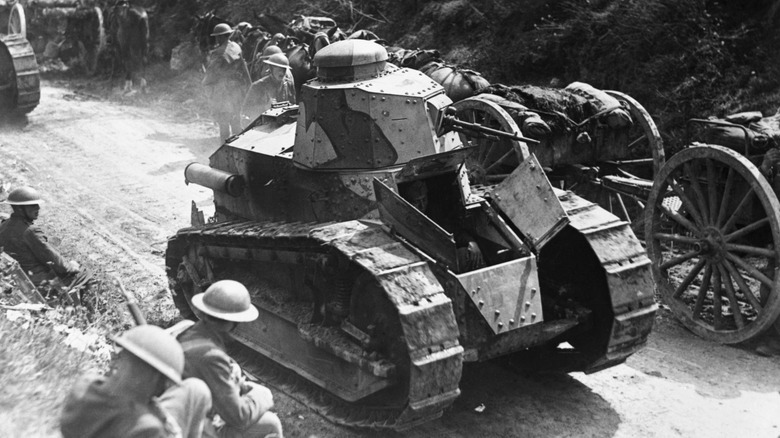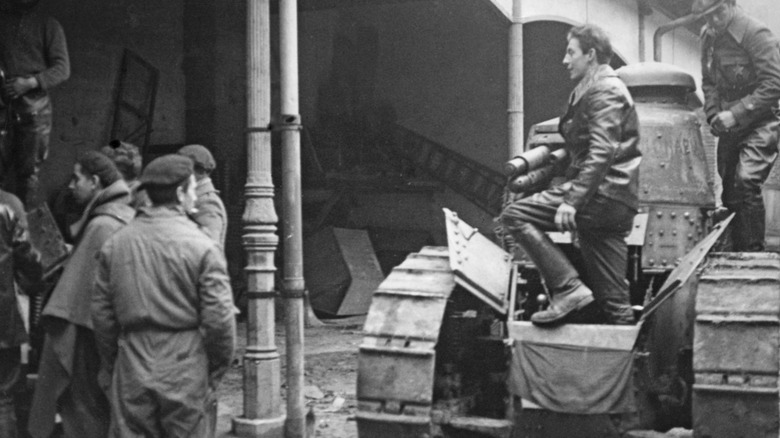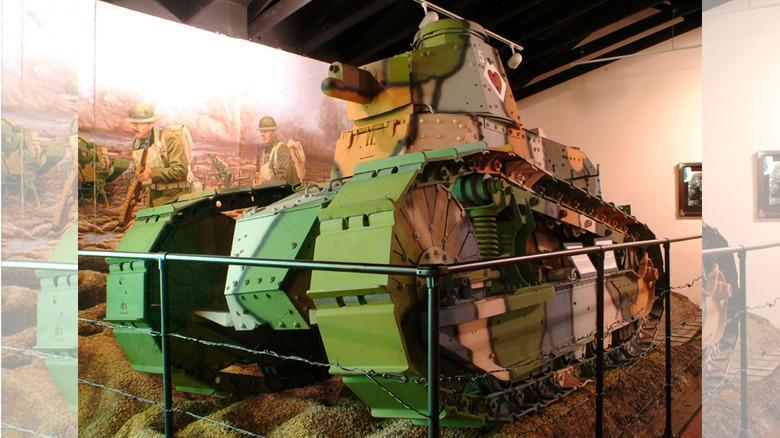How France's Compact FT Tanks Ruled The Battlefield In WW1
Though World War II tanks like the American M4 Sherman and the British Churchill are well-known, it may surprise you to learn that the French company Renault is largely attributed with inspiring the world's modern tanks. Designed originally by Louis Renault, the founder of what is known as the Renault Group today, the compact yet powerful Renault FT Light Tank, nicknamed "Five of Hearts" by Americans, would dominate the battlefield during World War I and would inspire tank design for decades to come.
Nearly 3,000 of these light tanks were produced from 1917 to 1918, during which Renault struggled to keep up with production demands. The rise of trench warfare and fully automatic machine guns had created a unique and deadly obstacle for infantry forces worldwide. The FT, however, excelled in this environment and enabled infantry to safely follow behind as the highly mobile armored vehicle navigated tough terrain.
While other French designs of the 1910s, like the Boirault Machine Tank, were abject failures, Renault made its mark with a solution that would be one of the final factors in the Allies' victory in the war.
The Renault FT-17 was small but mighty
Equipped with a 4.5 liter 4-cylinder Renault engine, the Renault FT, also called the FT-17, weighed more than seven tons, stood seven feet tall and roughly six feet wide. At these dimensions, the tank was able to go 4.6 miles per hour with 39 hp. While slow compared to speeds of the fastest and best modern military tanks like the French Leclerc tank, which is able to reach speeds of over 45 miles per hour, for the 1910s, this was fast for an armored vehicle. The tank had a 25-gallon fuel tank and could traverse over 30 miles on a single tank.
The main turret of the tank could be equipped with a Hotchkiss 7.92-millimeter machine gun or swapped for a Puteaux SA18 37-millimeter short-barreled gun. The small but mighty tank could only host two crew members.
The Renault FT-17 Light Tank would officially enter combat in May of 1918 and proved to be much more effective than other tanks of the time, like the Schneider CA1 and Saint-Chamond, which would regularly get stuck in the mud and often caught fire — two issues that made them much less effective in combat scenarios.
The Renault FT-17 was so popular that even the USA manufactured it
The Renault FT-17 was so feared on the battlefield it caused the enemy to surrender at the sight of them, though, by this point, the war was just about won as the U.S. had entered the war one year earlier. As the Central Powers lost their grip on Europe, the Renault FT tank's speed, mobility, and the overwhelming number of tanks on the field would completely overwhelm the enemy, which, at the time, had little recourse as they had been late in developing heavily armored vehicles.
In total, Renault produced over 3,500 FT tanks, with the U.S. military even purchasing the blueprints to manufacture nearly 1,000 of their own. While those American tanks would never see combat with the war ending, it still serves as a testament to the effectiveness of the Renault FT Tank.
If you're wondering why the name Renault sounds so familiar, it's because today, the company manufactures cars and owns other brands, including Mobilize and Alpine — the latter of which has a team in the Formula 1 Grand Prix. As it turns out, it has a long legacy of creating vehicles and stand as France's second-largest car brand as of 2022. While its success in other areas may go unnoticed, its contributions to tank design can't be understated.


